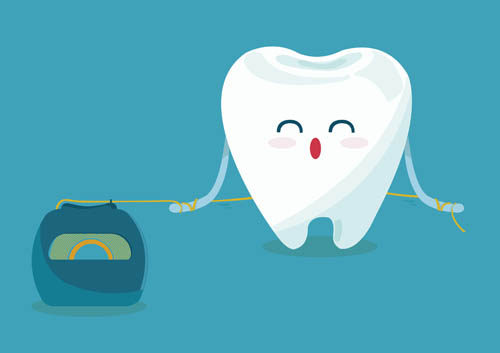What are the benefits of Invisalign®?
June 20th, 2017

A popular option for straightening teeth at R. William Barnard Orthodontics, Invisalign can be a great method for improving your smile, and can help patients with crowded teeth, crossbites, overbites, underbites, and more.
Invisalign, which is different from traditional braces, works by applying a series of clear, retainer-like aligners in order to eventually move your teeth into their ideal positions. Patients typically swap aligners approximately every couple of weeks.
At R. William Barnard Orthodontics, we have lots of experience using this technology to give our patients the beautiful and healthy smile they’ve always wanted. During your initial visit at our Omaha office, the first thing we do is take an impression of your teeth as they are now and digitize it. Using special software, we look at the current positioning of your teeth and compare it to the way your teeth should look.
Not only are the aligners invisible, they are also removable, so you can eat and drink what you want, and brushing and flossing are easier. Invisalign’s aligners are also comfortable, with no metal to cause mouth abrasions during your treatment. And, no metal and wires usually means you spend less time at our office getting adjustments. With Invisalign, you can view your own virtual treatment plan when you start, so you can see how your straight teeth will look when your treatment is complete!
Depending on the severity of the problem, Invisalign treatment may take anywhere from three to 18 months to complete. You should be aware that Invisalign is not as effective as traditional braces in treating bite problems, teeth that are lower or higher than others, or severely overcrowded teeth. Both teens and adults are now great candidates for Invisalign, so we invite you to contact our Omaha office to set up an initial consultation and learn more on how Invisalign can give you the smile you’ve always wanted!
How much calcium does my child need?
June 20th, 2017

When you were a kid, your parents may have told you to drink milk to build strong bones and grow tall and strong. Now that you have children of your own, you may hear yourself parroting those instructions you received years ago. Getting enough dairy is essential for young children whose teeth are growing. A child who consumes the recommended daily serving of dairy will develop healthy, strong teeth for the rest of his or her life.
So, which foods are the best in terms of acquiring the right amount of calcium? Milk and other dairy products are excellent sources of calcium. Milk also contains vitamin D, phosphorus, magnesium, and proteins. Magnesium promotes calcium deposits in your enamel, while phosphorus forms a small but important barrier against acidic foods that cause cavities. Vitamin D and protein are used by a child’s body to build bone tissue and maintain dental health.
According to a recent study, the majority of Americans, including children, do not receive enough calcium. In fact, according to the Academy of General Dentistry, only one in five children meets even the minimum standards for calcium consumption. The U.S. Department of Agriculture recommends that children under the age of eight should receive two and a half cups of dairy per day. Children older than eight need three full cups, the same as adult men and women. In addition to milk, eating yogurt is a great way your child can increase his or her dairy consumption. Drinking sugary beverages in place of milk causes cavities and tooth decay.
If your child does not get enough dairy consumption, they run the risk of improper tooth development and other dental health problems. Dr. R. William Barnard and Dr. Nia Jones and our team at R. William Barnard Orthodontics encourage you to monitor your child’s dairy consumption to ensure he or she grows healthy teeth to last a lifetime.
Questions? Give us a call at our Omaha office!
Proper Flossing Techniques
June 13th, 2017

Of all the dental hygiene techniques you can use at home to promote clean teeth and good oral health, flossing is likely to be the one that troubles most people. It can be viewed as confusing and time-consuming, but when you learn how to floss your teeth correctly, you’ll find it’s easy to do on a daily basis.
Proper flossing techniques are vital to the health of your teeth and gums. These tips will help you with the correct flossing procedures. Likewise, Dr. R. William Barnard and Dr. Nia Jones and our team can also help you learn how to floss effectively and efficiently.
Steps to Flossing Your Teeth Properly
- Choosing Dental Floss. You can find dental floss in various flavors, as well as waxed or unwaxed. If the floss you use seems to get stuck between your teeth, switch to waxed to make it easier.
- Flossing “Helpers.” Beginner flossers who have trouble coordinating the floss and the movements of their hands can use a floss holder to help them get in and around teeth.
- Preparing the Floss. Cut an 18-inch piece of floss to use for flossing a few teeth. This allows you to make progress before you must stop and cut another piece of floss.
- How to Hold It. Wind the ends around your middle fingers. Hold the floss taut, pinching each side with your thumbs and index fingers. Leave a couple inches free in the middle.
- The Process of Flossing. Use your index fingers to guide the floss toward your gum line. Bring it down between the teeth with a zigzag motion. Hold the floss in a C-shape around the tooth, and move it up and down along the side.
- Where to Floss. Use a clean portion of the floss to clean around and in between each tooth. Don’t forget about the molars in the back of your mouth, too!
Flossing: A Vital Part of Oral Care
Periodontal disease begins at the gum line; this is where flossing comes in. Regular flossing helps you remove plaque from the gum line and between your teeth to avoid gum disease. In conjunction with daily brushing and twice-a-year visits to R. William Barnard Orthodontics, floss each day to maintain good oral hygiene and overall health. Gum disease can have an impact on your general health, but it doesn't have to. This easy-to-prevent condition can be avoided with regular visits to our Omaha office and daily flossing. Allow our team to partner with you in maintaining a bright, shiny smile and good oral health.
Going on vacation? Remember these simple tips!
June 6th, 2017

If you are wearing braces and are planning a vacation, our team at R. William Barnard Orthodontics would suggest that you be prepared. We put together a list of items that will be handy to have with you at all times while you are out of town. They include:
- Toothpick, flosspick, or other interdental cleaners
- Travel toothbrush
- A water bottle or a mini bottle of mouth rinse
- Orthodontic wax to help with discomfort from protruding wires
- A small mirror for examining any possible issues in your mouth
Putting these items together in a “braces/oral hygiene kit” may be wise. You may even buy pre-made braces kits. Please ask us for more information.
If you happen to be on vacation and experience problems reaching our office, we suggest going online and searching for orthodontic practices in your area. Most orthodontists will lend a helping hand to another orthodontic patient and get him or her out of pain or discomfort.
We also suggest avoiding the following foods to prevent broken brackets and/or wire distortion while you are on vacation:
- Chewy, sticky, or gummy food
- Apples, pears, and other whole fruits (cut fruit into wedges before consuming)
- Bagels and hard rolls
- Corn on the cob
- Hard candies
- Hard cookies or pretzels
- All varieties of nuts, including peanuts, almonds, and cashews
Finally, if you are wearing clear aligners and happen to lose your tray, don’t worry! Simply put in either the previous tray or the next tray and contact us as soon as you get home!
Follow these tips and you can have a worry-free vacation! Please give us a call if you have any questions!










